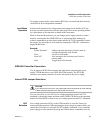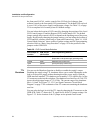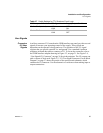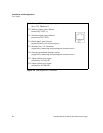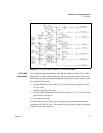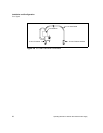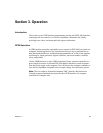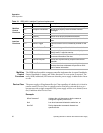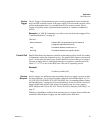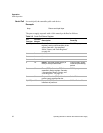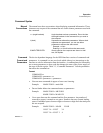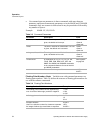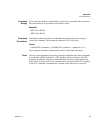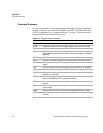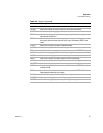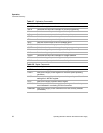Operation
GPIB Operation
Release 1.2 31
Device
Trigger
Device Trigger will implement the most recently programmed values whether the
unit is in local or remote control. If the power supply is in local mode, the new values
will be implemented when it is switched from local to remote control. Device
Trigger is typically used to synchronize the operation of a number of addressed
devices.
Example: Use HOLD Command to set values to be executed when triggered. See
“Command Reference” on page 39.
Then use:.
Parallel Poll Parallel Poll allows the computer controller to determine quickly which of a number
of instruments on the bus requested service. The parallel poll response corresponds
to bit 7 of the serial poll status byte. Parallel Poll does not reset the service request.
The power supply must be configured remotely to respond to a parallel poll with
either a "1" or "0" on one of the DIO lines if the unit is requesting service.
Example:
Service
Request
Service request is a uniline message asserted by the power supply at power on and
for fault conditions. Ten (10) power supply conditions are defined as faults: CV, CC,
OV, OTP, SD, FOLD, ERR, ACF, OPF, and SNSP. See “Accumulated Status, Status,
and Fault Registers” on page 46 for more information. Power ON (PON) can also be
flagged in the fault register if the supply's rear panel power on service request
(PON SRQ) switch is set to ON. See “Power On Service Request (PON SRQ)” on
page 21.
Enabling or disabling a condition from asserting service request does not affect the
condition within the power supply, nor the external status indicators.
ibfind "devname" Address the unit (devname or device name as
configured originally with ibconf)
ibtrg Command directed to entire bus, or
ibwrt"trg" Command directed to a specific device.
ibrpp Conduct a parallel poll.



